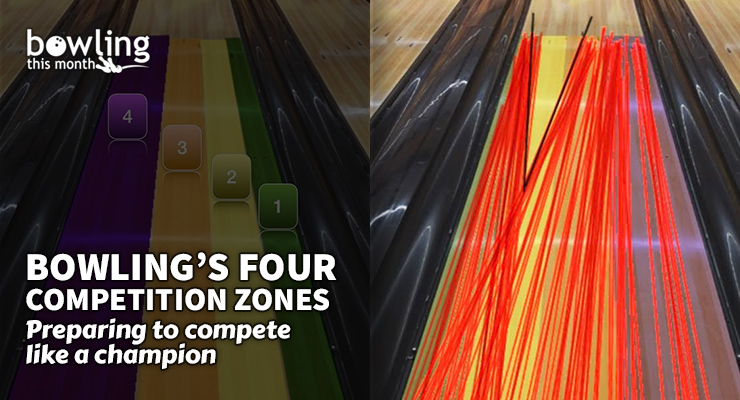Article Contents
- 1. Setting the tone
- 2. Redefining the competition zones
- 3. Migrating through the zones
- 4. The skills you need
Note: This article is only available to Bowling This Month subscribers.
For competitive bowlers, and those working toward that level, one of the most important questions to ask is, “What should I practice?” If your goal is to have a purposeful, effective practice, then knowing what to practice becomes vital. Aside from the technical items such as armswing and release, which can be reviewed via video, the more challenging questions surround practicing lane play:
- What are the angles I’m going to be bowling in competition?
- What are the requirements of these angles?
- Why can’t I just use the same adjustments all the time?
- What kind of ball motion am I actually looking for?
This article’s goal is to explore and answer some of these questions.
Setting the tone
Our sport has experienced huge changes in the last few decades, from bowling ball design, to oil machine and oil technology, to better understanding of topography. All this has necessitated a change in bowling mechanics: a need for more revs and more speed.
In an ever-changing environment, bowlers must adjust at the same rate, much faster than previous generations of bowlers, particularly at the competitive level. Whatever worked the last three frames might not work the next three. Basically, in order to be competitive, the bowler needs to master different angles and distances in order to keep up with transition through a tournament block.
“It’s the little details that are vital. Little things make big things happen.”
—John Wooden
As the lanes change, what’s required of the bowler might even be the complete opposite of what the bowler needed to do in the fresh oil portion of competition. Generally speaking, the skid phase shortens, the hook starts to increase, and bowlers need to find ways to work within these constraints. In certain, very specific, environments, such as short, high volume patterns, we can see less hook and increased skid as the lanes change. Either way, bowlers must adapt.
Regular readers of Bowling This Month are surely aware of the options that a bowler has in order to adjust: angles, speed, loft, axis control, and ball changes. All of these, except for the ball change, require small adjustments in your mechanics. Some of these might come ...
Already a premium member? Click here to log in.


